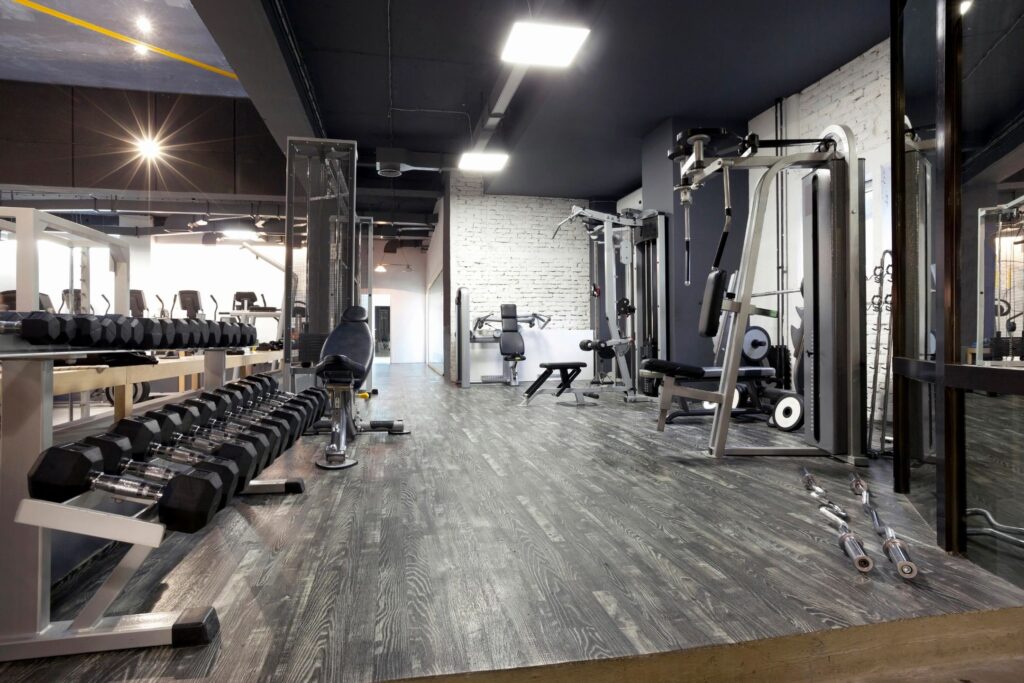Gyms are starting to open across the United States as Corona virus restrictions ease up. After a week of meeting with clients who were excited to lift heavy things again, I know a lot of people are eager to get back into their training routines. Here’s how you can get back into a strength training routine after a long break without jacking yourself up.
#1) Temper your expectations and ease into things.
You’re not going to be able to do the same amount of work you were doing before quarantine (unless you were lucky to have a home gym and stuck with your usual training schedule during lockdown).
Start with about 60% of the weight you’d normally use for a particular exercise, then increase that weight each week. It’s not “lame” or “weak” to go lighter. This will keep you safe and allow you to build back a base level of strength to progress from.
Likewise for cardio and conditioning. Keep your HIIT-style workouts short and sweet. If you’ve been doing mostly bodyweight, adding dumbbells to interval workouts is going to be a shock to your system, so make sure you stick to shorter (under 20:00) HIIT workouts for the first couple weeks.
Finally, don’t feel like you have to go balls-to-the-wall and hit the gym six days per week. Rest days are your friend. I like a 2-on, 1-off or 3-on, 1-off training schedule so that you have a couple rest and recovery days sprinkled into your training week. This is essential for long-term progress.
(Not sure what to do on a rest day? It doesn’t have to mean sitting on your couch.)
#2) Emphasize quality over quantity.
As you’re transitioning from running, bodyweight exercises, and maybe some light band/dumbbell movements, you won’t need crazy amounts of volume (reps) to get a good workout.
Focus on using damn-near perfect form for every exercise at the gym. If your form breaks down, go lighter or do fewer reps. You can always go heavier next time and add reps week to week.
Focusing on your form will teach your body to move well so that when you do get into heavier workouts, your muscle memory will kick in and execute reps safely and effectively.
#3) Warm up thoroughly before every workout.
A solid warm up should always be part of your workout routine, but it’s especially important when you’re coming off a long break.
The goal of any good warm up is to (1) elevate your heart rate and get blood flowing to all your muscles; (2) open up your joints, especially your hips and shoulders; (3) to prepare your body for the specific movements you’ll be working on that day; and (4) prime your nervous system to react quickly and efficiently.
This sounds like a lot of boxes to tick, but you can do all of the above without wasting 30 minutes of gym time on your warm up. Here is an article I wrote about how to warm up efficiently to avoid injury and get the most out of your workouts.
#4) You’re going to feel sore, but you can mitigate that soreness.
First, we have to talk about what causes soreness. It comes from muscle damage – literally from micro-tears in your muscles. The repair of those micro-tears builds your muscles back up, which is why weightlifting makes your muscles bigger and stronger over time.
This muscle damage can be caused by using really heavy weights, doing a lot of sets and reps, using fancy training techniques that overload your muscles, and by doing novel exercises your body isn’t accustomed to yet.
To avoid extreme muscle soreness:
- don’t go super heavy,
- keep training volume moderate,
- avoid fancy techniques like isometric pauses and drop sets,
- and don’t try 17 new exercises per workout.
Basically, keep it simple until your body is used to being back in the gym (this could take a couple weeks).
To mitigate soreness outside of your workouts:
- eat a protein + carb meal after exercise to help with muscle repair;
- drink lots of water throughout the day, both before and after exercise;
- move around (walk, stretch) outside of your workouts;
- and get 7+ hours of sleep (this is when your body repairs itself).
These tips should help you avoid crazy soreness and/or mitigate any moderate muscle soreness you do experience.
#5) Be safe out there, friends.
If you’re like myself and my clients, you’re pretty excited to get back into the gym. You’ve missed it for these past eight (or so) weeks. Let’s not mess things up for everyone else – make sure you follow local guidelines as to distancing, face coverings, hand washing, and other best practices so we can keep our gyms open.
It’s useful to remind ourselves that gyms have a particular etiquette meant to make exercise enjoyable for everyone, including wiping down your weights and benches, re-racking the equipment after you’ve used it, taking up minimal space, and generally not being a dick to the people around you. The rules will only be more restrictive now, but I look forward to the day I can high-five everyone after a tough workout.

